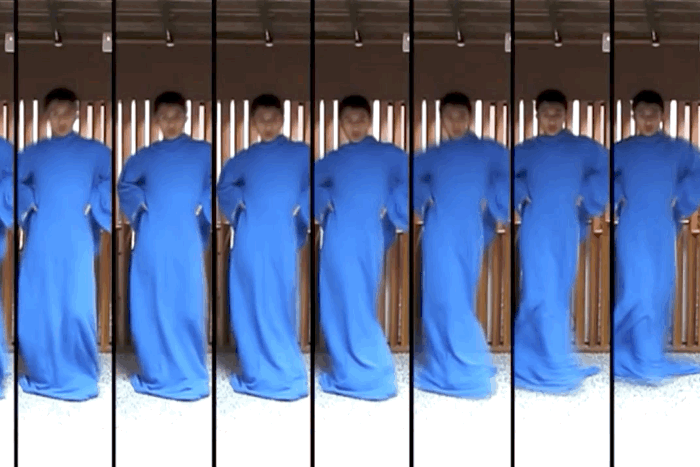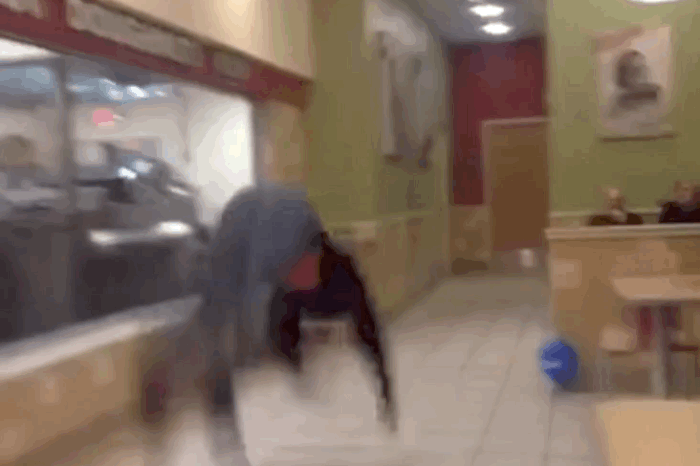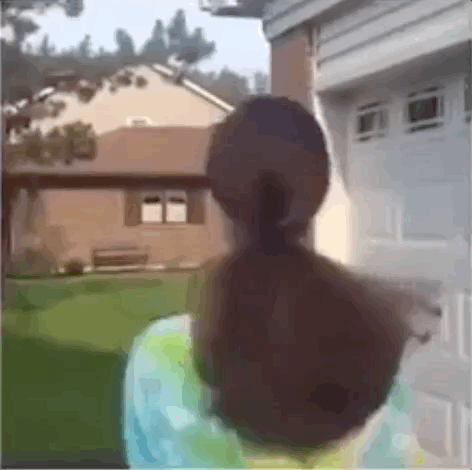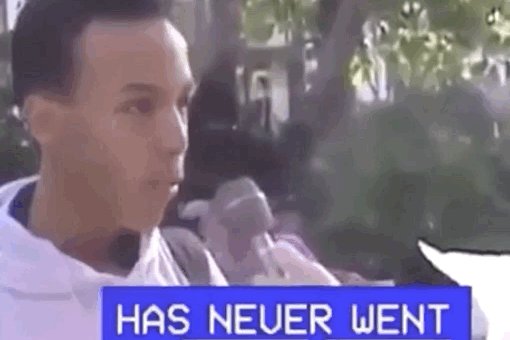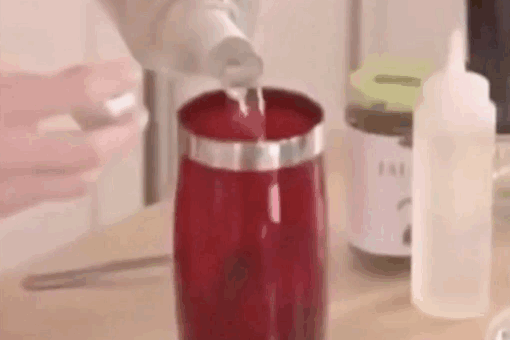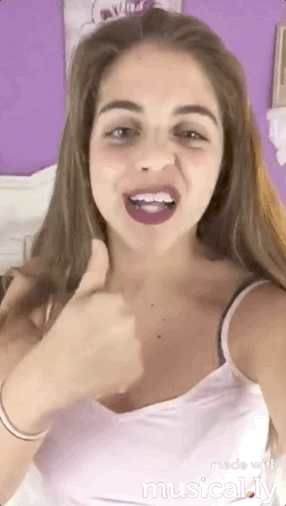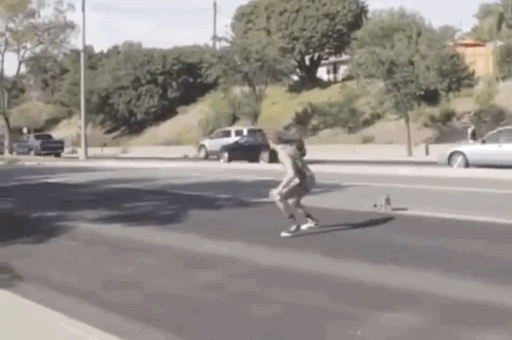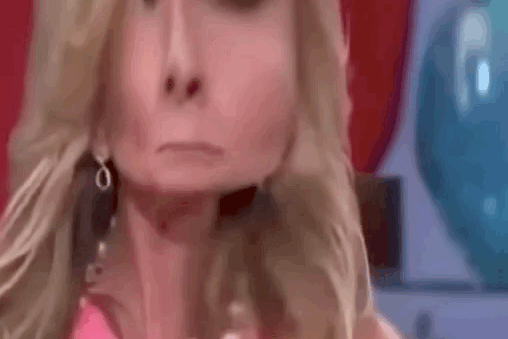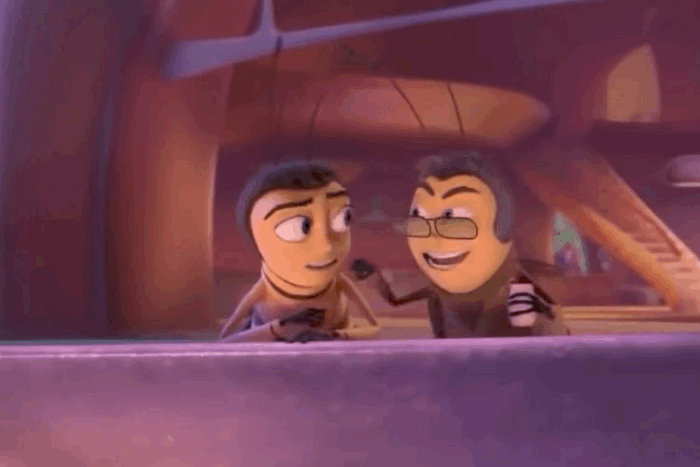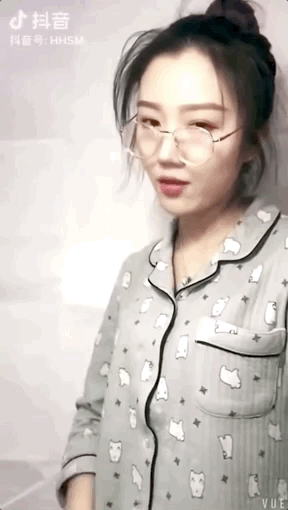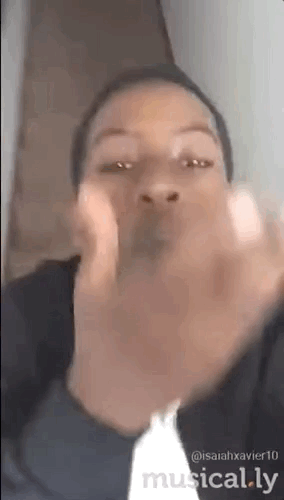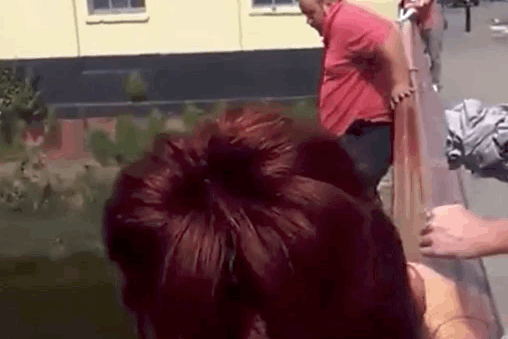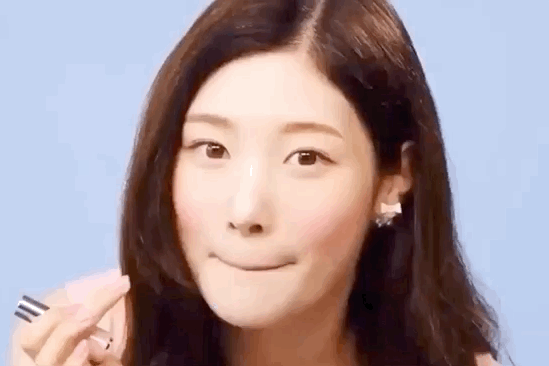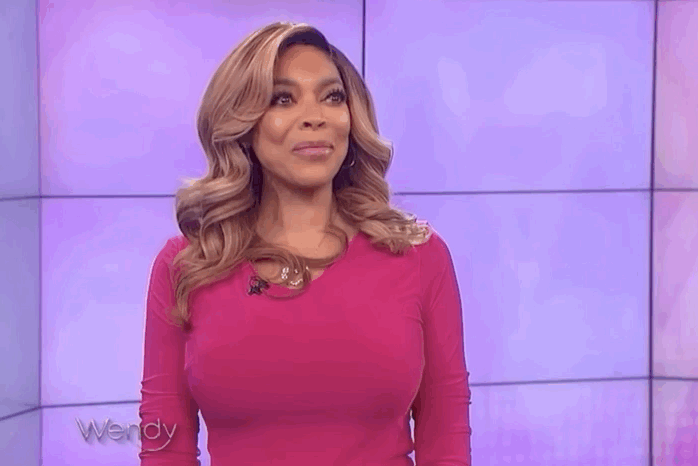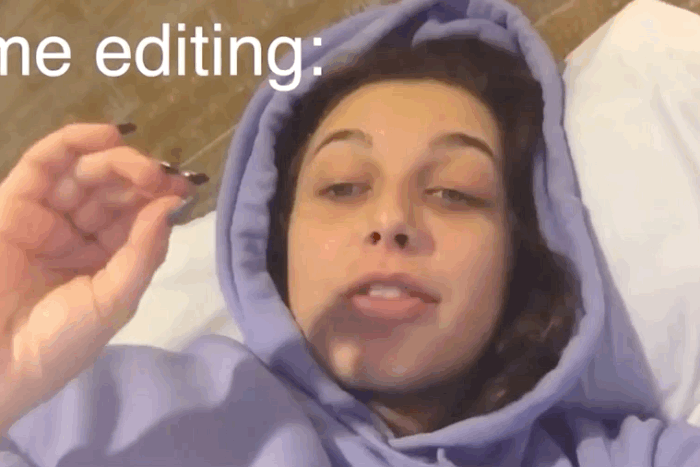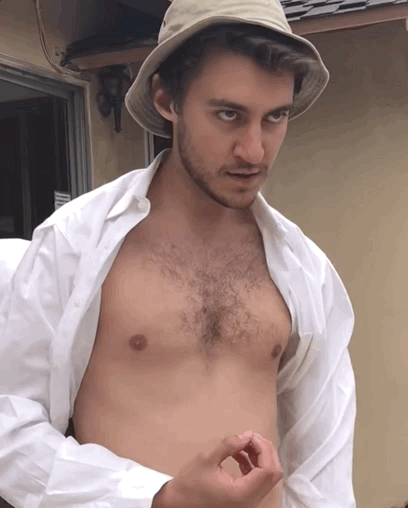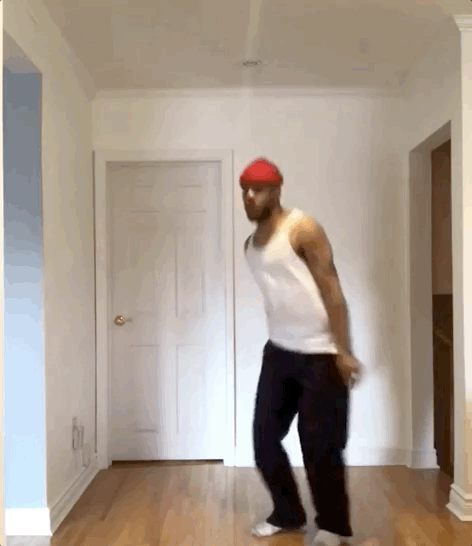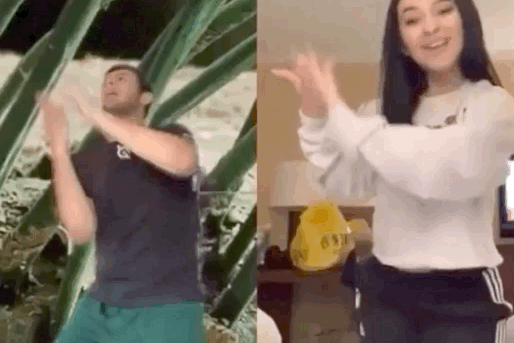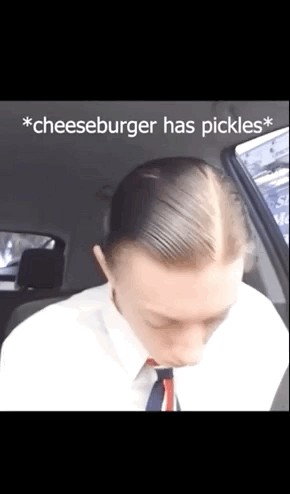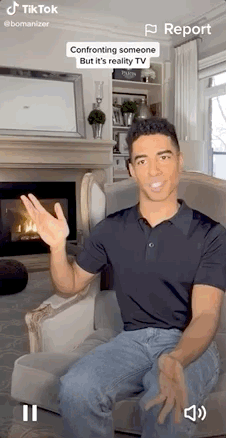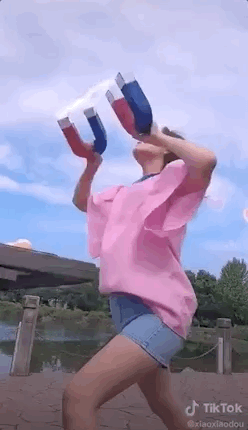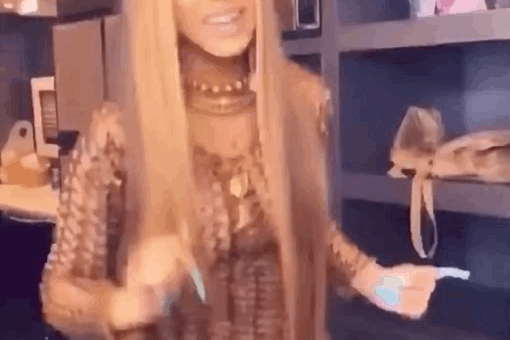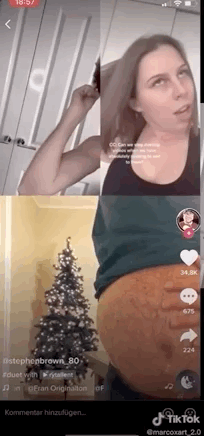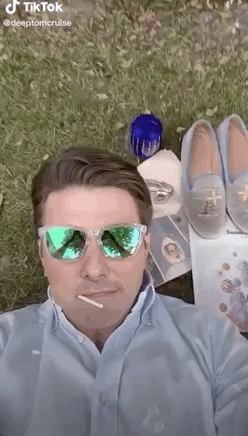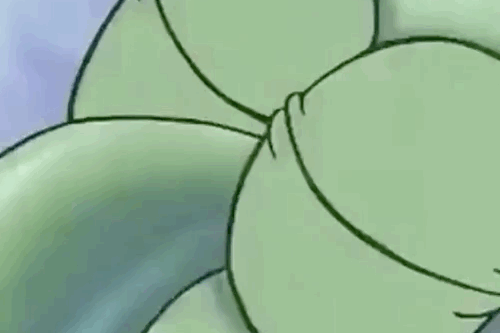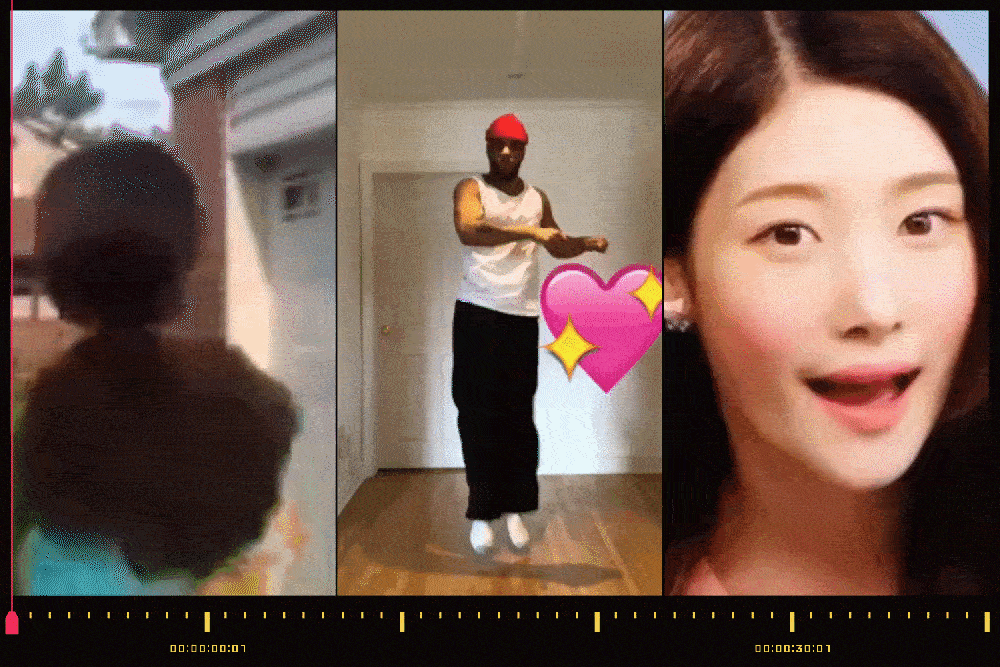
They say good editing goes unnoticed. Online, it goes viral. It’s clear in the best internet videos: Editing defines the aesthetic, humor, and power of online storytelling. None of the genre’s inherent absurdity would click into place without an editor’s eye for a perfectly devastating zoom, a video cut short a millisecond too early, or a freeze-frame right at the moment of climax, with text overlaid to really underline the point.
In This Issue
Editing Made the Video Star
And yet, the internet video has long lacked definition as a discrete genre, with its own tropes, techniques, and history. Like any art form, this one has been shaped in part by the technology available at the time. In compiling this list of influential video edits, we began in the last days of YouTube’s monopoly, shortly before the birth of the now-deceased app Vine. The online video has, of course, existed for decades, but it was the smartphone — and the proliferation of apps to come out of it — that made editing more sophisticated and more accessible to creators than it had ever been. Suddenly, anybody could shoot and edit a video, building the vocabulary of what that could look like: transition videos, lip syncs, and green-screen-driven storytelling began to cohere as distinct subgenres. That’s only accelerated in the age of TikTok, an app that offers more and easier editing tools for users than any that came before it.
Online video is an inherently communal form; it’s defined by thousands of people iterating on the same idea. Every once in a while, though, there’s a leap forward. Every video on this list represents an evolution in the form or exemplifies a particularly influential editing style — whether the creator was one of the first to attempt it, or just pulled off a jaw-dropping editing feat all their own.
The Lip-Sync
“Countdown (Snuggie Version)”
YouTube, 2012
Lip-syncing is everywhere now, thanks to TikTok and its precursors Musical.ly and Dubsmash, which had special features to make creating a seamless lip-sync a hell of a lot easier. But this particular one, a shot-for-shot recreation of Beyoncé’s “Countdown” video, was made before all that. A masterpiece made by and starring then-16-year-old Ton Do-Nguyen, it combines his flawless lip-sync performance with key editing elements we still see over and over in modern viral content, achieved with a digital camera and the editing program Vegas. The bulk of the video is shot in landscape, but Do-Nguyen integrates vertical shots throughout the video — particularly innovative in a time when many hadn’t accepted that the typical way people hold their phones is the easiest way to film with one. There’s a shot panning across a half-dozen vertical frames of Do-Nguyen dancing that looks like it could have been made in 2021 (probably using Trio, the TikTok filter that gives you a cohort of backup dancers who are just duplicated versions of yourself). And then, of course, there’s the Snuggie Do-Nguyen wears throughout: One TikTok trend last year involved recreating album covers using household items. The “Countdown” Snuggie would have worked perfectly, nearly a decade later. —Madison Malone Kircher
The Cut to Black
“Back at It Again at Krispy Kreme”
Vine, 2014
Comedian Atsuko Okatsuka once summarized her Twitter video style as “Okay, here’s the weird part. Good-bye.” It’s a perfect description for the videos, now common across Twitter, TikTok, and Instagram, in which the clip ends right as the action hits. That feeling of What the hell did I just watch overlaps with Well, I simply have to watch that again — a winning combination for both creator and audience. “Back at it again at Krispy Kreme,” a micro-video from Vine, is the platonic ideal of this technique, which was popularized on the late app. In the clip, a guy holds up a Krispy Kreme hat to the camera; says, “Back at it again at Krispy Kreme”; and does a back handspring, knocking a sign off the wall. Except you don’t really see the sign fall off the wall. You see the handspring and the initial crash of body and neon and then black. That’s all you get. It’s impossible not to watch it again. —MMK
The Zoom
“Who Is She”
Vine, 2015
Sometimes you just need a little emphasis. The extreme zoom is one of the easiest and most effective editing tricks and a fixture across content platforms. It can be used to subvert expectations and emphasize a reaction. The camera moves in and establishes, or otherwise breaks, the fourth wall — similar to the cinematography of mockumentaries like The Office. This wordless 2015 Vine by the creator who now posts under @francesformayor was one of the first to become popular: Dancing to a-ha’s “Take on Me,” she whips her face around to reveal a mouth full of braces and an inscrutable smile. In 2016, Snapchat made the editing effect ubiquitous by adding a one-finger digital zoom. It follows your thumb as you record (instead of requiring a second hand to pinch the screen), allowing for spontaneity. Four years out from the death of Vine, TikTok also offers a one-handed option and even has a face-zoom effect that uses facial-recognition software to automatically hone in, kicking off several viral trends — not to mention the career of TikToker Bella Poarch, who uses the feature to make expressive lip syncs. —Zoë Haylock
The Freeze-Frame
“Oovoo Javer”
Vine, 2015
A YouTuber was trying to make a web series when he accidentally made one of the greatest Vines of all time. It was 2015, and during a man-on-the-street segment, he walked up to a kid, stuck a microphone in his face, and asked, “Who’s the hottest Uber driver you’ve ever had?” The kid, mishearing “Uber driver,” responded, “I never went to Oovoo Javer.” What makes the “Oovoo Javer” video funny isn’t the mixup, but the way the editor freezes the frame, adds early-internet text on screen, zooms in, and sets it to a piece of plucky, upbeat stock music. The vibe is public access–style irony, vaporwave without trying too hard.
The freeze-and-zoom-in edit is an extension of a similarly beloved internet video edit: the cut to black at the height of the narrative that allows the viewer to simply imagine the rest of the video. Unlike the cut to black, the freeze-and-zoom-in edit lingers on the very best moment — which is essentially the basis of TikTok’s wildly popular “Oh no” trend, in which users edit videos of themselves about to get hurt and freeze before the viewer can see it. “Oovoo Javer” could be considered the original “Oh no” moment. —Rebecca Jennings
The Reaction
“Two shots of vodka”
Vine, 2015
Gen Z may have retired the reaction GIF, but reaction videos are still a fixture of internet culture. A quick cut from one video to another — a juxtaposition easily achieved with most editing programs, including the ones built into TikTok — uses the same logic as images posted side-by-side on Tumblr or Twitter: Putting unrelated images next to each other can tell a story or land a joke. “Two shots of vodka” is the ultimate insert-your-reaction video. It takes a clip from Sandra Lee’s cooking show, Semi-Homemade, in which the host obviously pours more than the “two shots of vodka” the recipe calls for. In some versions, the suspense of watching the shots stream out of the bottle is emphasized: The editor might make the pour louder or loop the clip. But the original footage of Lee’s knockout serving alone is enough to indicate what’s going to happen next. The cut facilitates a thrilling millisecond of recognition before the reaction clip comes in and says it all — that was too much vodka. —ZH
The Smooth Transition
Baby Ariel
Musical.ly, 2015
A style of lip-syncing videos came out of the app Musical.ly in the mid-2010s. It involved hand choreography accompanying jerky camera movements that emphasized the beats of the song. And, crucially, the app made it possible to sing along to a song in slow motion, then automatically speed up the footage. It gave the whole thing an energetic feel and allowed users to create clean, smooth transitions. Ariel Martin, whose username is Baby Ariel, was an expert in the form. Known for her buoyant facial expressions and hand motions, she became one of the app’s first breakout stars by busting out Musical.lys daily. The app was eventually bought by TikTok, which still allows you to choose the speed of your sound while you film, allowing for precise choreography (even when that choreography was really just striking different poses). Some techniques that Baby Ariel helped popularize — shaking the camera, swinging it back and forth, and choreographing moves that match the lyrics — are prevalent in TikTok dances today. —ZH
The Stunt Edit
“Kitty Cat Car Jump!”
Vine, 2015
Approximately 7,000 years ago, in 2015, Logan Paul hadn’t yet become the guy known for things like vlogging a dead body in Japan or platforming Alex Jones. Back then, he was just an up-and-coming Vine star building a name for himself with stunty gag videos and flexes directed at an audience of predominantly young female viewers. In one of those early outings, “Kitty Cat Car Jump,” Paul appears to dodge speeding cars on a freeway to rescue a kitten. Writer Caroline Moss, who profiled Paul that year, says it was created with a combination of freeway footage and a greenscreen — a proper cinematic action scene in six seconds. It’s a testament to the creativity of early Viners, who were able to do so much in so little time. Nowadays, TikTok makes it easy to do modest green-screen work with a built-in filter, but this Vine is no crude effort; it’s technical. Videos like “Kitty Cat Car Jump” made the later era of messy content, like Emma Chamberlain’s, that much more of a 180. —MMK
Distortion
“That’s my opinion!”
Around the same time wacky face filters were a de-facto feature of every social media app, there was the “That’s my opinion!” Vine. The video, popularized by iconic Viner Quenlin Blackwell in 2015, is a six-second clip from the season nine reunion of The Real Housewives of Orange County in which Vicki Gunvalson defends her possibly cancer-faking boyfriend to her former best friend, Tamra Judge. “How do you know what’s good for me?” Gunvalson shouts. “That’s my opinion!” screams Judge. (Bonus: the stunned expressions of castmate Shannon Beador and host Andy Cohen.) This is all standard fare for a Bravo reunion, but the Vine-ified version adds filters that make it appear as though every person’s face is melting like a Dalí clock, with big bug eyes and stretched-out foreheads, their voices dropped to an uncannily deep octave.
The distortion filters used on the housewives — which appear to be the same ones that have come standard issue with Apple’s Photo Booth app since the mid-2000s — seem crude to our contemporary eyeballs. But the legacy of ironic, funhouse facial distortions is still all over the internet, from PewDiePie YouTube thumbnails to edits skewering Drag Race contestant fights. Automatic distortion and facial recognition has become far more sophisticated in the years since, so much so that beauty filters are influencing plastic-surgery trends. Making your face look weird (or gorgeous) has been an integral part of self-presentation online ever since Snapchat made filters mandatory for any camera app worth using. The more interesting use, though, is in the millions of videos where people put on filters in order to play multiple characters, allowing them to control a narrative while still leaning on the comedy of an exaggerated face. —RJ
The Arbitrary Rule
“The Entire Bee Movie but every time it says bee it speeds up by 15%”
YouTube, 2016
The 2007 film Bee Movie’s runtime is certainly longer than five minutes and 29 seconds, but this YouTube edit of it gets you from start to finish in just that. The concept is simple: Every time somebody says “bee,” the clip speeds up by 15 percent. The word is used twice in the prologue narration alone, so the characters already sound like cartoon chipmunks by the time they start speaking. It’s a piece of surrealist art, using a film that’s already about the relationship between a talking bee and a human. (Call it “beestiality.”) This video didn’t invent the concept — an earlier version, which used just the trailer for Bee Movie, also went viral — but it helped establish the idea in the world of internet-video editing in perpetuity. You can now find sped-up versions of everything from Star Wars to Ariana Grande songs. In each, the speed editing becomes the joke, and there’s a satisfaction to the consistency of knowing exactly how the video will play out. It feels similar to a more recent video edit trend on TikTok called “Poland is everywhere,” which involves manipulating the colors on a tiny slice of any video to reveal the red and white of the Polish flag. Speed editing created an umbrella category for very literal editing techniques where a general rule is applied consistently to video content. —MMK
The Reveal
“Karma’s a Bitch”
Douyin, 2017
In 2017, the “Karma’s a bitch” challenge swept across the Chinese video platform Douyin (a TikTok predecessor that’s also owned by TikTok’s parent company and is currently only accessible to people in mainland China). Lip-syncing to audio from a Riverdale fan edit, of all things, participants start the video dressed in nothing special, faces unmade. They mouth, “Oh, well. Karma’s a bitch” — then, usually with the wave of a scarf or bathrobe in front of the camera, reappear looking hot, with a new outfit, perfect makeup, hair done, a filter to make their skin look extra smooth, and perhaps a slow-motion effect to heighten the drama. Its predecessor, Vine’s “Don’t Judge Challenge,” came a few years earlier and involved teens making themselves look intentionally bad before revealing their hotter alter-egos. With “Karma’s a bitch,” the transitions become slightly cleaner, similar to the reveal videos we see on TikTok today. The devices change but the general concept remains the same: a seamless transformation from one look to another. The fun is watching on repeat trying to find a glitch in the matrix, a visible rip in the transition. The best edits render this task fruitless. —MMK
The Hypnotic Transition
“Addicted To My Ex”
Musical.ly, 2017
You ever scroll by a video that seems like it’s just going to be someone taking a video of themselves, but then it suddenly looks like they peeled off their own face or disappeared into a mirror, and you’re like, Wait, what just happened, and why can’t I stop watching it? You can thank Musical.ly for those. Pretty much everyone on that app tried hypnotic transitions — a surprisingly lo-fi method wherein you film for a few seconds, pause, then position yourself and your phone so that the transition looks cool and repeat as necessary. But one of its true masters was then-teenager Isaiah Howard, who was known for his impossibly intricate editing, and who first went super-viral on his 60-second video set to the song “Addicted to My Ex,” which took seven hours to film. Since then, the torch has been passed on to TikTokers, who have expanded the genre with a whole bevy of visual tricks (like this one, where the user takes off his own head and spins it in the air). Some are done with clever camerawork, like Howard’s, while others are edited using desktop tools like Premiere Pro. —RJ
The Green Screen
“Shooting Stars”
YouTube, 2017
“Shooting Stars” emerged during a transitory period. It was January 23, 2017 — less than a week after Vine had ceased operations and more than a year before TikTok would launch in the U.S. There was no default platform for super-shortform videos. And yet, life found a way. The first version of the meme, a video titled “Fat man does amazing dive - Shooting Stars,” was uploaded to YouTube by a user named All Ski Casino and repurposed a clip that showed … well, you can probably figure it out. The edit caught the attention of the r/videos subreddit, where it quickly spawned hundreds of imitators — including a version in which Nicki Minaj shoots off to Prague.
The structure is easy to grasp. Take a clip of someone falling or spinning or generally goofing it. Then, at the exact moment of maximum goofage, freeze the video, extract whoever is goofing, and show them floating through trippy visuals while blasting the Bag Raiders song “Shooting Stars.” In 2017, one would have needed basic knowledge of a program like Adobe After Effects to make these videos; now, the meme feels like the prototype for the TikTok filters that let you effortlessly stencil out a video’s subject and change their surroundings — such as Green Screen, which replaces the background. That’s the real legacy of “Shooting Stars.” —Brian Feldman
The Fan Edit
“Chaeyeon Barbie Tingz”
Twitter, 2018
You’d be hard-pressed to scroll through Twitter or TikTok without eventually stumbling upon a fan edit, a montage put together from clips of a celebrity looking particularly attractive or talented. While fanmade videos have been around for years, the viral 2018 “Chaeyeon Tingz” by Twitter user @chaeyeonbot pushed the format in a shorter, snappier, and more shareable direction. The video pairs photos and videos of South Korean singer and actress Chaeyeon with the confident sound of Nicki Minaj’s single “Barbie Tingz.” Using rapid transitions, the 29-second clip packs in a visual résumé of Chaeyeon’s commercial success, a video-game-style fight sequence where she knocks out hate comments with the power of a pretty face, and a tongue-in-cheek slideshow that includes many clearly fake pictures of her with other celebrities (“Yup, him too, he would still wife me”).
The key here, as in most fan edits, is timing. Every movement — dancing, winking, a headline popping up on-screen — is meant to match the music, which gives the final product high replay value (the same reason that “Beyoncé always on beat” fan edits, which pair footage of Bey dancing with songs from different artists, are so satisfying). Circulating on Stan Twitter, “Chaeyeon Tingz” birthed a trend that lasted over a year as other K-pop fandoms applied the format to their faves. While the original video and most of its derivatives have been taken down for copyright infringement, it’s still fondly remembered as an icon among fan edits, which are now dedicated to everyone from late-night hosts to Hollywood stars. —Jennifer Zhan
Sound Play
“Wendy Williams except there’s no talking”
YouTube, 2018
Gag dubs were an early and prolific trend in YouTube comedy videos, not least of all because the technological barrier to entry was so low — anyone could mute a TV clip and dub their own audio on top. (Plus, YouTube generally couldn’t strip the audio from your post on copyright grounds if you redubbed it yourself.) The result was viral videos from creators like Jaboody Dubs and Bad Lip Reading, who applied comedic voiceover to footage from infomercials, sports broadcasts, and news. Vern Hass, known online as @vernonator6497, cites old Billy Mays gag dubs as an inspiration behind his YouTube favorite “Wendy Williams except there’s no talking,” which takes clips of The Wendy Williams Show and renders them creepy and unfamiliar by wiping the soundscape of background noise. Instead of music and cheers, claps, and shouts from the audience, we see Wendy smack her lips and hear the sound echo through the cavernous studio. We hear an audience member shift in their chair. We hear a cell phone go off. This video presaged a trend of creators on YouTube and Twitter taking silent edits a step further and dubbing over famous reality-TV fights entirely with whispers (ASMR, weaponized) and influenced how some people record their own, first-person content — as in the TikTok trend of applying Auto-Tune to your voice while recounting an embarrassing anecdote, adding an extra layer of warped hilarity. —Rebecca Alter
The Self-Referential Edit
“Me Editing”
YouTube, 2018
Emma Chamberlain is the influencer who made it cool to not appear perfect online. The vlogger — who got her start on YouTube in 2017, when she was 16 years old — helped popularize a self-referential video-editing style that seems effortless, like she really just sets the camera to record and gives her viewers whatever happens. This is, obviously, not true, but the finished product makes you feel like Chamberlain leaves nothing out; she goes out of her way to include flubs, grossness, and goofiness. (In this video, she explains her recent bout of diarrhea.) She’ll label these scenes in her videos “me editing,” a caption that signals to her viewers that this is the real her, the messy her behind the scenes who was in charge of editing all her own content (up until recently, when she hired an editor to help her out). In 2019, the New York Times described her editing style as “instinctual”: “zooming, adding text to the screen and pausing to point out the best parts.” It’s a tactic Chamberlain says she honed in on because it was what made her friends laugh. Editing her content in a way that shows “flaws” and paints a “relatable” portrait is no more or less calculated than the content produced by creators who go a more manicured route, but by choosing to use imperfection as her filter, she inspired a wave of copycats. (YouTube search “vlogging like Emma Chamberlain.”) Chamberlain’s impact is about more than being a person who doesn’t edit out her burps or FaceTune her zits, though. You don’t get Charli D’Amelio filming TikTok dances wearing sweats in a messy bedroom without Chamberlain laying the groundwork. —MMK
The Multi-Character Edit
“Get tf out of my way type way”
Vine, 2019
Professional dancer and original Viner Casey Frey is known for editing together narratives featuring himself playing numerous, equally ridiculous characters. In his earliest hit, 2016’s “bad boi’s,” he stars as the titular, thirst-trapping bad boy and the girl he’s flirting with. He eventually moved toward longer, more complex Instagram videos that allowed him to better merge his dance skills with his penchant for absurdism. His opus came in 2019 with the video “Get tf out of my way type way,” set to the track “GOMF” by DVBBS, in which Frey encounters a bully (played by Frey), from whom he is saved by a third character (played again by him) when he inspires him to dance. While his noodle-y dance moves are great, the genius lies in the editing — it creates a narrative climax in which the two Freys sync up their choreography, lending the whole thing an uncanny quality. Is it a metaphor for the battle between the superego and the ego or, as some viewers have theorized, a Marxist manifesto of the TikTok age? Who knows! Whatever it is, the ridiculousness transcends: “Get tf out of my way type way” has gone viral multiple times, inspiring its own TikTok challenge and launching thousands of memes. The conceit of one person playing multiple characters is one that apps like Vine and TikTok made easy — see also former Viner Jay Versace, another master of the form. Frey perfects it here with his quick shifts in perspective, timed to his palpitating chest. —Eduardo Carmelo Dañobeytia
Text on-Screen
“You made it through to a new day!!”
Instagram, 2019
There are about a zillion videos on the internet that use text on-screen as their general format, but none are as joyous or inventive as Donté Colley’s, which combine raw dance talent with mesmerizing animation. The Toronto-based dancer began uploading videos of himself to his Instagram in 2018 in which he dances to fun music, then overlays each move with emojis — sparkling hearts spill out of his head while he smashes a negative thought with a little cartoon hammer, a burst of confetti exploding across the screen. Each video has its own inspirational messages, like “You got this!” or “Keep going!” or sometimes “Get out cho feelings.” (In 2019, Ariana Grande invited Colley to be in the video for “Monopoly” so she could use his edit style.)
There’s essentially zero limit to what a text-on-screen video can look like, from recipe tutorials to TikTok challenges where a person points to the space next to them and then adds text that pops up on-screen, set to the beat of the music. Digital creators have been experimenting with it since the earliest days of internet virality (remember eBaum’s World?), with notable trailblazers like Bill Wurtz adding psychedelic graphics, text, and music to his frantic video essays. In the smartphone era, creating a text-on-screen video is as simple as Snapchatting a friend, and everything from font use to timing can change its entire meaning. These days, text on-screen is easy for even the Luddites among us, so doing it well is its own artistic feat — one where both text and visuals play off one another in a constant, winking feedback loop. —RJ
The POV
Danielle Cohn Dances to Usher
TikTok, 2019
On its face, a POV, or point-of-view video, is a relatively standard format — consider any GoPro footage, handheld documentary, or, well, a very large segment of porn, all of which capture a scene from a certain person’s perspective. But on TikTok, the POV is collaborative, inventive, and weird as hell. No meme better exemplified the comedy of the form than Danielle Cohn dancing to Usher’s “I Don’t Mind.” Cohn, a teenaged Musical.ly-turned-TikTok star whose rise to fame has been marked by several controversies (usually about her age and what is or isn’t appropriate for it), uploaded the original in 2019. On its face, there’s nothing that special about the video; teenagers dance to songs in their bedroom all the time on TikTok. What made this particular video the genesis for such a creative explosion, is in two strikingly aggressive hip thrusts she makes during the dance. Other TikTok users started “duetting” it — a feature that allows you to respond to a video by filming side-by-side — pretending to be thrown across the room by her hip motions, leaping onto a bed or against the floor in an adjacent frame, and creating the illusion that Danielle’s hip is literally knocking them out. The real boom came after the dance had become an enormous meme. People began to expand the joke, duetting Danielle as objects inside the room — “you’re watching her from inside the Forever 21 bag,” “you’re the lice in Dani’s hair, “you’re her bones” (there are audible cracks). In doing so, they combined TikTok’s most important editing feature — the ability to remix, or “duet,” what’s already been done — with the platform’s signature surrealism. —RJ
Celebrity Worldbuilding
“Lorde Getting Sick From Pickles”
TikTok, 2020
Absurdism, pure and simple. “Lorde Getting Sick From Pickles” is a brilliant example of a category of video popular on TikTok and often shared on Stan Twitter. User @imcaucasianking used intentionally shitty editing techniques to stitch together a deranged little film where the pop singer Lorde is put in a comically mundane situation: She orders a cheeseburger at McDonald’s (set up with an exterior establishing shot as just “Donald,” with one arch) and ends up getting sent to the hospital because of a pickle-induced allergic reaction. The visuals do not cohere: A cutout video of Lorde talking is plopped onto a low-res stock photo of a McDonald’s. A clip of a YouTuber biting into a burger is used to represent Lorde eating. Her face is chroma-keyed green to indicate she’s getting sick. A reaction video of Britney Spears running away from the camera represents a worker fetching the “manager,” who is “played” by a popular reaction image character — an easy laugh for Stan Twitter regulars. There’s a whole world of these videos: YouTube user Dariannas Eggs is known for putting pop divas in fatal and embarrassing situations with rudimentary video-collage editing. A variation of the form is made by TikToker @kevinatwater, who inserts himself into his pop diva audio-visual collages. These videos are the closest that filmed media has come to replicating the pure, anarchic creativity of playing Spice Girls with Barbie dolls. They bring us back to that boundlessness. —RA
The Reality-TV Stock Sound
“Confronting someone but it’s reality TV”
TikTok, 2020
Parodying the heightened production beats of reality TV isn’t exactly new; shows like 30 Rock and Kroll Show have been doing it for years. But this video by TikToker Bomanizer Martinez-Reid is a classic in the realm of amateur creators. Here, Martinez-Reid and a friend act out a relatable Gen-Z situation — not liking the caption that a friend adds to an Instagram photo of you — and run it through the Bravo machine. The power of the edit comes in its use of stock sounds: Housewives music and sound effects that signify shade. Drawing on reality-TV clichés has become a superpopular TikTok trend. One audio clip — a dramatic sound drop from the series Bad Girls Club — has been used over 1.5 million times on the app (and was first used by Isaiah Washington), giving ironic heft to mundane “plot twists” and confrontations. It’s a style that both makes fun of how overproduced reality TV is and demonstrates how we’ve all become our own reality stars and producers — daily life, Kardashianified. —RA
The Superhero Edit
“The moon hit out of the cake”
TikTok, 2020
Superhero edits on TikTok — where users give themselves abilities like flight or control over lightning or fire — can get their overachieving creators a lot of attention: You won’t find a premade filter on the app that can generate all these objects and effects for you. TikTok user @xxd222 (whose more than 890,000 TikTok followers are nothing compared to the 3.9 million she has on the app’s Chinese counterpart, Douyin) adds kung fu and superpowers to her cooking videos, as in this demonstration of how she makes the pastries called mooncakes. While most cooking videos aim to be simple enough that viewers can replicate the results, xxd222 uses magnets to pull the moon down to Earth and flatten her dough, summons a chicken to fly overhead and drop eggs into her hands, and spins herself above the bowl when it’s time to mix ingredients. Over-the-top sound effects and fake explosions help make the final shot (a conventional close-up of a mooncake being split in half) a hilariously mundane payoff. Another creator on TikTok, Julian Bass — the self-proclaimed “CEO of Edits” — uses VFX to transition between tricks where he turned his body semi-transparent or separated his head from his body. Last summer, he was signed by a talent agency after a TikTok in which he replicated the powers of characters like Ben 10 and Spider-Man caught the eye of a Marvel director. To their followers, creators like xxd222 and Bass are heroes in their own right. —JZ
The Song Edit
“Coronavirus”
Instagram, 2020
Musicians on the internet have an ear for turning anything — a video, a Reddit thread — into a song. One of the earliest was Songify the News, a web series responsible for the viral “Bed Intruder Song.” More recently, TikToker Charles Cornell is known for his piano accompaniments to Cardi B’s viral rants. The musician Lubalin creates songs out of absurd conversations he finds posted online. Over on Instagram, DJ iMarkkeyz (along with iComplexity and Suede the Remix God) has made an art out of not only transforming memes into songs, but creating an accompanying video collage. iMarkkeyz got his start on Vine, when remixing videos and sounds was its own burgeoning genre among stans, comedians, and musicians. In his now-famous “Coronavirus,” everyone from Elmo to Childish Gambino moves in sync with his remix of Cardi B saying “Coronavirus! Shit is real.” This is editing to create a vibe, the way a DJ would at a club.
TikTok utilizes beat-sync tech, where a slideshow of photos and videos changes depending on the rhythm and frequency of a sound. It’s led to trends where you upload random videos and let TikTok create montages for you (a feature that’s commonly used for fan edits). But to make something like “Coronavirus,” where the music and the images are in perfect harmony, takes an editor’s attention to detail, aligning movement with sound so cohesively it feels no longer like a compilation. It’s also a good example of how an edit can combine a multitude of cultural references and somehow make them all work. —ZH
The Edit
“Can we stop dueting videos when we have absolutely nothing to add to them?”
TikTok, 2020
“Can we stop dueting videos when we have absolutely nothing to add to them?” It was a reasonable plea, posted by user @johnson_fran in November 2020 — and other users responded by duetting her original, then duetting those duets, and so on. The “Stop dueting videos” Frankenstein chains were easily the most genius use of TikTok’s duet feature, precisely because they weaponized its very purpose. They’re just one example of the “meta edit,” wherein the video knowingly subverts the viewer’s expectations of what the editing might look like.
To a generation that grew up watching YouTube videos made by experimental amateurs, the meta edit reveals that not only are the characters in on the joke, the tech guy behind the scenes is, too. Consider this video, in which a girl films a gag using the typical shot-reverse-shot front-facing TikTok format, then cuts to a wide shot showing what it would look like if someone walked in while she was making it. It offers a look at how embarrassing it is to perform the physical act of making a video designed to go viral on social media. Another example begins with a mundane attempt at a trending challenge, then acknowledges the emptiness of catering to digital algorithms as if they were ancient sun gods using frantic sound effects and trippy, overlapping visuals. You can offer all kinds of new editing tools on your video app — but you can be sure that people will find a way to use them against you. —RJ
The Deepfake
Deep Tom Cruise
TikTok, 2021
Did Tom Cruise really join TikTok to film himself discovering bubblegum at the center of a lollipop and tell a story about meeting Mikhail Gorbachev? No — those eerily accurate videos circulating on the app in February 2021 under the username @deeptomcruise were deepfakes created by Belgian visual effects specialist Chris Ume, and were the first (and so far only) TikTok deepfakes to penetrate mainstream discourse. Much like the actual Tom Cruise, they did end up freaking out a lot of people.
Deepfakes are visual or audio content that have been manipulated by artificial intelligence to look or sound like someone else. The term was coined by a Redditor known for posting AI-generated celebrity porn in 2017. Earlier that year, researchers at the University of Washington terrified the world when they released a realistic-looking deepfake of Barack Obama delivering a speech he never gave. Since then, apps like Reface and FakeApp allowed anyone with a smartphone the ability to, say, make Elon Musk sing the “Numa Numa” song or Joan Didion sing “What Is Love” (albeit in a rather unconvincing way). Deepfakes have, of course, been used for nefarious purposes, mostly as revenge porn. But Ume’s shows how they can also be a playful genre of internet art. To make his TikToks, Ume enlisted a Cruise impersonator and put in weeks of work using professional video-editing tools and the open-source algorithm DeepFaceLab. So many of the internet’s most internet-y videos have revolved around exposing how the editing sausage gets made. Deepfakes are the opposite: an attempt to trick the brain into seeing something and to delight in the trickery. —RJ
The Chaos Edit
“Stan Twitter Music Video 6 - Unlock It by Charli XCX and Kim Petras”
Twitter, 2021
Can a video encapsulate the Internet? At first found on Twitter, and more lately on TikTok, the meme recap is essentially a music video of a series of memes — sped up, slowed down, rewound, and blended together inside the entire Adobe Creative Suite. It features some of the most intriguing editing moves on the internet in 2021. It’s hard to pick just one, but this video set to Charli XCX’s “Unlock It (Lock It)” — a 2017 song that has recently gone viral on TikTok — jam packs an entire acid trip’s worth of memes into a couple minutes: the Tiny Twinz dancing over a video of Ella Emhoff’s runway walk, Normani doing her “WAP” choreo encircled by the K-pop group Loona, drag Velma. Trying to unpack each layer of reference could fill the Library of Congress. The video, made by @twerkuwu and titled “Stan Twitter Music Video 6,” is not unlike a fan edit, if the object of fixation were the Internet itself. Memes are superimposed onto others with ghostlike opacities; a greenscreen in one meme simply means an opportunity for another overlaid on top. Through their dizzying rhythms, these videos approach the abstract and artistic. Watching them is like getting an IV hookup of pure internet chaos. As Morpheus said, “No one can be told what the Matrix is, you have to see it for yourself.” —E. Alex Jung


